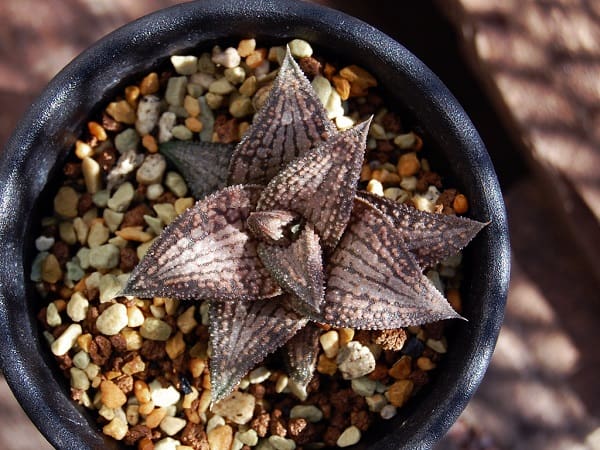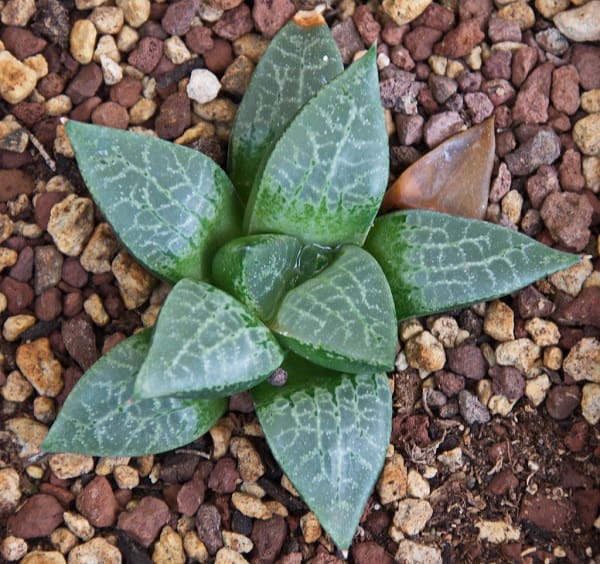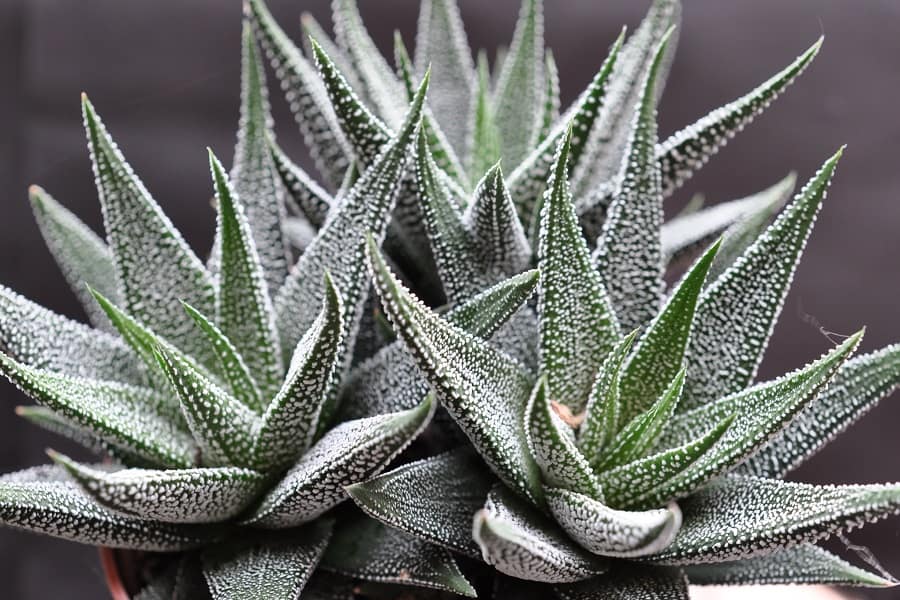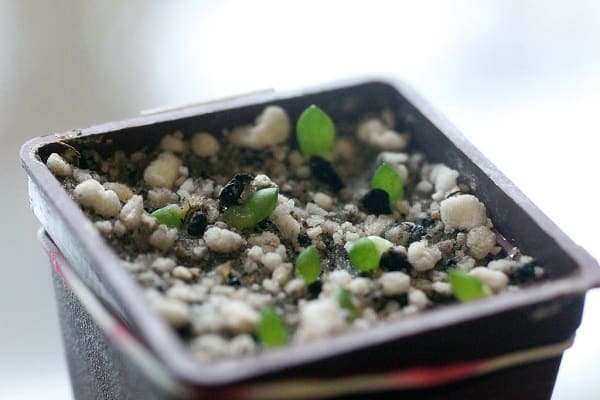20 Types of Haworthia Succulents: A Comprehensive Guide
Haworthia is a cool succulent that’s actually part of the same family as aloe. There are around 160 different species of these plants, and they’re pretty unique. One thing that sets them apart is how their leaves form a cool rosette shape, like a flower, sticking out from the main stem. And let me tell you, there’s a wide variety of Haworthia types out there, each with its own special look. It’s hard to put them all into one category because they’re all so different. Some have leaves that are all sorts of shapes and colors, making them super interesting to look at.
Originally, these awesome plants come from South Africa and Namibia, where they love hanging out in rocky spots under bushes and grasses, where they get some nice shade. You might find them being sold as cacti, but they’re actually succulents. Yep, they’re not cacti but they do store lots of water like their cactus cousins. Pretty neat, right?

Related Post:
1,000 Types of Succulents with Pictures
Contents
- 1 Haworthia Varieties
- 1.1 Haworthia angustifolia
- 1.2 Haworthia attenuata
- 1.3 Haworthia coarctata
- 1.4 Haworthia fasciata
- 1.5 Haworthia bolusii
- 1.6 Haworthia cuspidata
- 1.7 Haworthia limifolia Striata
- 1.8 Haworthia margaritifera
- 1.9 Haworthia marumiana
- 1.10 Haworthia reinwardtii
- 1.11 Haworthia chloracantha
- 1.12 Haworthia nigra
- 1.13 Haworthia venosa
- 1.14 Haworthia emelyae
- 1.15 Haworthia viscosa
- 1.16 Haworthia truncata
- 2 Haworthia Appearance
- 3 Haworthia Care
- 4 Propagation
- 5 Pests and Diseases
- 6 Conclusion
Haworthia Varieties
Let’s check out some really cool types of Haworthia plants! There are so many different kinds, but here are about 20 for you to explore:
Haworthia angustifolia

These stemless plants have thin, pointed leaves that form a rosette. Keep an eye out for the finely serrated edges and white to pale pink flowers.
Haworthia attenuata

With its sprouting triangular leaves narrowing to a tip, this plant also forms a rosette. One unique feature is the rough surface with raised warts.
Haworthia coarctata
These stem-forming plants have leaves that curve inward, creating an interesting shape. Look for their brownish-green leaf blades.

Haworthia fasciata

Stemless and sprouting, these plants have upright growing leaves that are pointy and form a rosette. The rough surface and distinctive white horizontal stripes make them easily recognizable.
Haworthia bolusii

These stemless plants have inwardly curved, elongated lanceolate leaves. Their bluish-green leaf blades have thorns along the margins and keels.
Haworthia cuspidata

Get ready for densely leafed rosettes with soft gray-green leaves that have hard, bristly tips. The leaves are short and wedge-shaped.
Haworthia limifolia Striata

You’ll notice that these plants have triangular leaves marked with white ridges, creating a striking contrast with the dark green color. They don’t grow very tall, reaching only about 4 inches.
Haworthia margaritifera

With a short trunk and triangular-ovoid leaves, these plants form rosettes. Look out for the densely packed white warts on the coarse, dark green leaves.
Haworthia marumiana

Instead of a stem, these plants have thick triangular leaves growing in tight rosettes. The leaves grow almost vertically and are about 2 inches long.
Haworthia reinwardtii

These plants come in various forms. Some have stem-like leaf rosettes, while others have upright or inwardly curved leaves. Keep an eye out for their blue-green leaves with flat white nodules.
Haworthia chloracantha

These stemless beauties have firm, rough leaves that are light green. Their leaf surface is patterned like a network, and they have thorns on the edges and a large one on the keel.
Haworthia nigra

Stem-forming and slow-growing, these plants have upright, bent back, and spreading ovate-triangular leaves. The leaf blades are blackish to gray-green with a rough surface and warts.
Haworthia venosa

With curved ovate-triangular leaves, these stemless plants grow into rosettes. Check out the reticulated leaf surface and warts on the undersides.
Haworthia emelyae

These plants rarely sprout and have clearly truncated pointed leaves. They form loose rosettes and have a dark green, lined leaf surface with scattered small spots and raised warts.
Haworthia viscosa

These trunk-forming plants have spreading triangular leaves arranged in three rows. The rough leaf surface and spread-out, piercing leaf tips give them an unusual appearance.
Haworthia truncata

Sprouting slowly, these stemless plants have suddenly truncated leaves arranged in two rows. The dark gray-green color and flat, semi-translucent end surfaces make them stand out. Look for the rough surface with tiny warts.
That’s just a peek at some awesome Haworthia types you can explore!
Haworthia Appearance
Let’s take a closer look at the appearance of Haworthia plants. When it’s time for these plants to bloom, the inflorescences (which are basically clusters of flowers) sprout from the center of the rosette. Now, the individual flowers may be small, but don’t be fooled – there can be up to 50 of them on each inflorescence! And here’s the interesting part: since Haworthia comes in different leaf shapes and types, their flowers can vary quite a bit too. It’s like a flower party with all sorts of unique looks!
Now, just like us humans need some rest, Haworthia plants also have a break period, usually around eight weeks during July and August. During this time, their above-ground growth stops, and their roots get renewed deep in the earth. They recycle the old roots to make way for fresh new ones. It’s nature’s way of rejuvenation!
Oh, and here’s a cool tip: if you’re into hydroponics (that’s growing plants in water instead of soil), you can totally give it a try with Haworthia. But just make sure to use pots with drainage holes. It’s like giving the plants a proper water fountain for their roots to stay happy and healthy.
Related Post:
Haworthia vs Aloe: 3 Interesting Differences and Similarities
Haworthia Care
Taking care of Haworthia succulents is easier than you might think! One important thing to remember is to be cautious about watering them. Too much water can harm these plants because their roots, which are often fleshy, can easily rot. So, it’s crucial not to overwater them. Generally, giving them a small sip of water once a week is enough, and in winter, they need even less.
Opinions vary when it comes to fertilizing these plants. Some people suggest not fertilizing at all because it can change their growth, while others recommend using a weak cactus fertilizer regularly. The best way to find out what works for your Haworthia is to give it a try and observe the results.
Apart from watering and fertilizing, there isn’t much else to do in terms of care. Haworthia plants handle winter without any problems. In fact, the cooler the winter is, the less water they require. Propagating these plants is also a breeze as they usually produce pups, which you can separate and replant. All in all, Haworthia is a versatile and low-maintenance plant.

Location
Now let’s talk about the ideal location for your Haworthia to thrive. They prefer a spot that isn’t too sunny, whether you keep them indoors or outdoors. These plants do much better in shade. Personally, I have my Haworthia in a north-facing window where it receives only a bit of morning sun, and it’s doing great. However, it’s worth noting that there are some species and varieties that enjoy a little more sunlight.

Substrate
When it comes to soil, it’s beneficial to use a mineral-based substrate that allows water to drain easily, preventing waterlogging. Make sure the pot has drainage holes for excess water to escape. Avoid heavy soils that retain too much moisture!
Planting and Repotting
Planting and repotting Haworthia isn’t complicated either. The most important factor is using the right substrate. It’s recommended to repot your plants every couple of years, preferably in early spring at the beginning of the growing season. If you notice dead leaves, always remove them. If the rosettes completely cover the surface of the soil, it’s time to move them to a larger pot. However, in general, repotting annually or every two years can help remove old roots and prevent rot.

Pruning
Pruning Haworthia isn’t necessary unless you want to remove dried-up leaves or take cuttings for propagation. Avoid excessive trimming, as it’s generally unnecessary.

Overwinter
Haworthia isn’t bothered by winter and can handle it well. Just be mindful not to overwater them, especially when they’re experiencing cooler temperatures. They don’t require much water during this time. Excessive moisture and consistently damp soil can lead to rot, so be cautious. It’s best to keep them in a frost-free area between 41 to 59°F, although some species can tolerate even lower temperatures. If maintaining a warmer environment around 60 to 64°F, ensure adequate light exposure by using plant grow lights if necessary. The warm living room isn’t ideal for their winter needs.
Propagation
Propagation of Haworthia succulents is a breeze, and there are a few ways you can do it. Let’s take a look at each method:
1. Propagating Haworthia from offsets
Offsets, which are little baby plants that grow alongside the main plant, are the simplest and quickest way to propagate Haworthia. If the offset has well-established roots, you can carefully cut it off and plant it in a new container.
In case the offset doesn’t have roots yet, don’t worry! Let it dry for about three days so that a callus forms at the cut surface. Then, gently press the cut side into fresh plant substrate. These offsets root quite rapidly and start growing on their own.
2. Propagating Haworthia from leaf cuttings
While it requires a bit more effort, propagating Haworthia from leaf cuttings can also be successful. First, separate a healthy leaf from the parent plant and let it sit for a few days, giving the cut end time to dry out and form a callus.
Next, lay the leaf flat in a container filled with potting soil. Keep the soil slightly moist, but be careful not to overwater it. Find a bright spot, but make sure it’s not too warm. Warmth and indirect light are perfect for the leaf to start growing roots.
After a few weeks, you’ll notice roots forming on the leaf. At that point, you can treat it as a mature Haworthia plant.
3. Propagating Haworthia from seeds
Growing Haworthia from seeds is also an option, although it can be a bit trickier. Usually, when you grow from seeds, you won’t get plants that belong to a specific variety. It’s a bit like a surprise mix!
You can use very fine mineral pumice as the seed soil. Sow the seeds throughout the year, keeping the temperature between 59°F and 68°F. Avoid overheating because it can hinder germination. Keep in mind that the germination capacity of the seeds is limited, and they won’t remain viable for more than a year.

Pests and Diseases
Diseases are rare among different types of Haworthia. If the plant dies, it is usually due to too much water.
Root insects, mealybugs, and scale insects are common pests that can affect various haworthia species. But these creepy crawlies are often difficult to discover since they cleverly hide in the leaf rosettes or in the soil. It is therefore important to take a closer look at different haworthia succulent types from time to time. The pests can be countered with the usual means.
Common problem: Haworthia turning brown
What goes wrong most often with different types of Haworthia is brown leaves. This is often because the plant has been given too much water, causing the roots to rot, and therefore the leaves turn brown. It may also be because water has entered the rosette of the plant, causing the rosette of the plant to rot. So water carefully!
Does your Haworthia species have brown leaves? Get them out! With a small tug on the leaf, the leaf often comes loose from the plant. Otherwise, remove the leaf with a clean and sharp knife.
Conclusion
Haworthia is easy to care for, and there are many different types of Haworthia species. It impresses with its diverse appearance and the many shapes and colors found among haworthia succulent types. They are interesting plants, and there are many plant enthusiasts who have become collectors and who cannot hoard enough different types of Haworthia.
